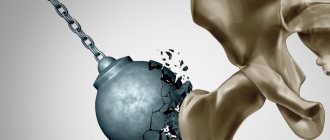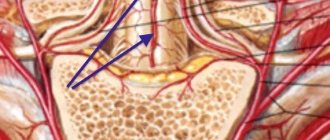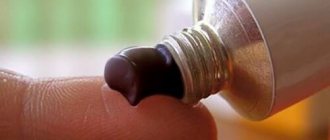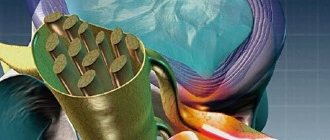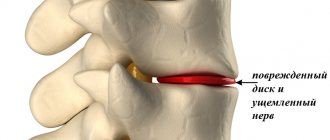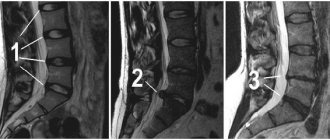The spine is a complex anatomical formation that consists of a large number of elements (vertebral bodies, tendons, joints, etc.) and performs a number of important functions in the body (supportive, protective, motor).
Under the influence of various factors, the functioning of the spinal column can be disrupted. One of these factors, according to scientists, is poor nutrition.
To maintain a healthy spine, it is necessary to provide nutrients not only to the vertebrae themselves, but also to the intervertebral discs, as well as the massive ligamentous apparatus and surrounding muscle groups.
First of all, the spine needs micro- and macroelements (calcium, magnesium, phosphorus, zinc), animal proteins, mucopolysaccharides, as well as vitamins B, A, C.
Below we have looked at 7 useful products, the use of which will help strengthen the spine, accelerate the delivery of nutrients to all its parts, improve metabolism in bone tissue, increase the elasticity and firmness of ligaments, and also reduce the risk of developing degenerative and destructive pathologies.
Dairy
Hard cheeses, milk, yoghurts, cottage cheese are the main sources of calcium for the human body. To replenish the daily requirement of a macronutrient, it is enough to consume 200 g of cottage cheese or 120 g of cheese per day.
American studies have proven that drinking milk 6-7 times a week (especially in combination with cheese and yogurt) has a positive effect on the density of the vertebral bodies in older men.
To fully absorb calcium and deliver it to the bones, scientists recommend adding vitamin D to the diet.
Dairy products are extremely important for maintaining the strength of the spinal column due to their high calcium content. In order to maximize the absorption of calcium, it is recommended to consume additional vitamin D.
Prohibited Products
For patients with osteochondrosis, nutritionists recommend giving up certain foods or limiting them in the diet. Smoked meats, canned food, all fast food, and semi-finished products are especially harmful. They contain a lot of “empty” calories that are of no value for replenishing energy reserves. In addition, they contain an excess of salt and spices, which provoke fluid retention in the body and the formation of edema.
| Group of products prohibited for use for osteochondrosis | Product Name |
| Meat, poultry | Pork, bacon, lard, smoked chicken, duck, goose, fatty lamb |
| Fish | Smoked fish of all varieties and types |
| Fats, oils | Cream margarine, animal and cooking fat, spread |
| Vegetables, greens | Spiced and canned vegetables, rutabaga, onions, radishes, white radish, turnips, celery tubers, horseradish, garlic |
| Beverages | Carbonated drinks (lemonade, kvass), coffee, full-fat milk, alcohol with any quantitative content of ethyl alcohol |
Fatty fish
Trout, tuna, salmon, mackerel, and sardines contain large amounts of vitamin D.
Scientific evidence shows that vitamin D is effective in preventing osteoporosis.
According to Italian scientists, vitamin D is able to maintain the density of bone tissue in the spine, prevent resorption, and also accelerate regeneration even in cases of serious pathologies of the parathyroid glands.
To compensate for the daily vitamin D deficiency, it is enough to eat at least 50 g of fish meat, 20 g of caviar or cod liver per day. Preference should be given only to fresh fish, steamed or baked.
In addition, oily fish is one of 11 foods that reduce inflammation in joints.
Fatty fish are a valuable source of vitamin D, which is necessary to maintain the functional and anatomical integrity of the bone tissue of the spinal column.
Useful products for the spine
If you want to avoid problems with the spine, you need to include in your diet:
- milk, cottage cheese, yoghurts and hard cheeses. These foods contain a lot of calcium, which is necessary for the strength of the vertebral discs. In order to provide the body with a daily dose of calcium, you need to eat a pack of cottage cheese or 120 grams of cheese. If you drink a glass of milk every day, eat a serving of yogurt and a sandwich with cheese, the density of your vertebrae will remain the same even into retirement age. Please note that calcium from foods is not always completely absorbed by the body. In order to improve this process, it is necessary to take vitamin D in addition to dairy products;
- fatty fish. Sardines, tuna, salmon, trout and mackerel are suitable. They contain vitamin D, which improves calcium absorption and maintains bone density. The daily requirement of vitamin D is contained in 50 grams of fish. It can be replaced with 20 grams of fish caviar or cod liver. It is not recommended to fry fish; it is better to steam or bake it;
- nuts and seeds. Make sure you always have peanuts and pumpkin seeds at home. They contain a lot of zinc, which improves the absorption of vitamin D and calcium. Peanuts contain a lectin that restores the cartilage of intervertebral discs. These nuts must be consumed by a growing body to prevent scoliosis and form a strong spinal axis. Pumpkin seeds strengthen bone tissue;
- garlic. It is a natural antioxidant that destroys harmful bacteria, strengthens the immune system, minimizes the risk of inflammatory processes in the spinal cord and increases bone density, preventing fractures. Garlic also helps to lose extra pounds, thereby reducing the load on the spine;
- green vegetables. This is a storehouse of vitamin C, which stimulates the formation of bone tissue and prevents the development of osteoporosis. Vegetables are also antioxidants that prevent toxins from entering the bones. They also contain a lot of vitamin K and calcium;
- carrot. This vegetable is also an antioxidant. It quickly relieves inflammation and restores blood flow to bone tissue. Carrots contain vitamin E, which can regenerate damaged vertebrae. Therefore, by regularly eating carrots, you will avoid intervertebral hernia and osteochondrosis;
- meat broths. It is advisable to cook them not only from meat, but also from bones, skin, and tendons. These broths contain a lot of hyaluronic acid. Once in the intestines, it breaks down into protein metabolites that maintain the strength of tendons and ligaments.
Seeds and nuts
Pumpkin seeds and peanuts are especially beneficial, as they contain large amounts of zinc, which promotes the absorption of vitamin D and calcium.
Foreign studies have shown that the lectin contained in peanuts improves the differentiation of bone tissue cells of the vertebral bodies, as well as the cartilage of the intervertebral discs.
Consequently, peanuts are recommended for children and adolescents for adequate formation of the spinal axis and the prevention of various disorders (for example, scoliosis).
In turn, pumpkin seeds are one of the 6 foods that strengthen bones.
Nuts and pumpkin seeds contain a lot of zinc, which is necessary for the formation of the spinal column and strengthening bone tissue.
Nutrition for the spine
Already at an early age (by the age of 18 and earlier), one can detect signs of initial osteochondrosis of the spine, complicated by protrusions and herniations of intervertebral discs.
There are many reasons causing early osteochondrosis and its complications and osteochondrosis in general. The main ones include the following:
- lack of adequate physical activity aimed at strengthening the muscles of all parts of the spine;
- heavy inadequate physical stress on an untrained spine;
- poor posture (stooping, scoliosis, due to deformation of the pelvic bones or shortening of the limbs of any nature);
- hereditary weakness of cartilage tissue (collagenopathy);
- poor nutrition;
- age – as degeneration (aging) of cartilage tissue.
How to keep your spine youthful? There are basic directions, following which you will give your spine a chance to remain young and healthy for a long time.
1. Daily physical activity. But this is not a treadmill or a gym class. This is a specific therapeutic exercise aimed at strengthening all muscle groups in all parts of the spine. By the age of 25, the bone growth zones close, and by this time the smallest vessels supplying the intervertebral disc are obliterated. In subsequent years, the disc is fed through the hyaline plate. To enhance nutrition of the disc, it is necessary to accelerate local blood flow. The most effective way to improve blood flow is physical activity. In other words, for normal nutrition of the intervertebral discs, daily physical muscle work must be present. This rule works both in young and old age.
Physical activity can be combined with massage, physiotherapeutic methods, such as magnetic laser therapy, magnetotherapy, and all types of electrical myostimulation. All these methods are also aimed at improving microcirculation, which in turn improves the condition and nutrition of the intervertebral discs.
2. Posture. Watch your posture. Don't slouch. Remember that normally there are physiological curves: cervical and lumbar lordosis and thoracic kyphosis. This position should be maintained in both the sitting and standing positions. It is in this position that the spine fully performs its shock-absorbing function and the weight is evenly distributed across all discs. As soon as the cervical lordosis flattens (this happens when we pull the neck forward), the load on the discs is redistributed and protrusions and hernias begin to form in the more overloaded discs. The same thing happens in the lumbar region with flattening of the lumbar lordosis, or in the thoracic region, for example, with scoliosis. Form correct posture. You can check yourself: stand near the wall, touching it with the back of your head, shoulder blades, buttocks, calves and heels.
3. “Feed” your spine correctly . Get rid of excess weight - you don't need it. If you are overweight, the load on the intervertebral discs increases, and their degeneration begins earlier. Make sure that your daily diet contains dishes containing collagen: broth from homemade rooster (we are not talking about chicken from the store), jellied meat, jellied fish or tongue, brawn, milk jelly, marmalade. It is necessary to enrich your diet with calcium: hard cheese, fermented milk products, sesame and poppy seeds, red fish (with bones and skin). Vitamins, macro- and microelements in sufficient quantities: a lot of fresh herbs, berries and vegetables, seaweed. And also complete protein: pork, beef, chicken eggs. Drink plenty of clean water.
4. Try not to lift anything that can't be lifted . But if you still need to lift something heavy, lift it with a straight back, without twisting it. It is better to squat down, take the load and rise, and you must also carry it with a straight back, and then squat down again and lower it to the ground. You can lift heavy things, but “correctly”, with a straight back, and for this the spine must be trained daily.
5. Swim. The bigger, the better.
If you decide to improve your spine health, at the ACMD-Medox clinic you can do the following:
- MRI of all parts of the spine
- consultation with a neurologist
- nutritionist consultation
- physiotherapy
- massage
- manual therapy
- kinesitherapy
- physiotherapy.
Be healthy and always in a good mood!
Garlic
Garlic destroys pathogenic bacteria, stimulates the immune system (reduces the risk of infectious and inflammatory damage to the spinal cord), and normalizes cholesterol metabolism.
Regular consumption of garlic helps to reduce body weight, which reduces the load on the spine.
Research conducted in Argentina found that the use of garlic increases bone mineral density in the spine. This helps protect the spinal column from accidental injuries and fractures.
Thus, garlic is a universal product for maintaining spinal health. The effects are realized through many different mechanisms.
Diet
With osteochondrosis, not only the composition of the products is important, but also their correct, rational use:
- You should eat fractionally - in small portions up to 6 times a day;
- you should give preference to food steamed, baked in foil, simmered in water;
- it is necessary to reduce the amount of spices to prevent fluid retention in the body.
You need to eat a balanced diet - your diet should contain proteins, healthy vegetable fats, and complex carbohydrates.
Diet for women
The energy value of a therapeutic diet for osteochondrosis for women should be approximately 2500 kcal. If the patient is overweight, then nutritionists recommend limiting yourself to 2000 kcal per day. But sharply reducing your calorie intake is strictly prohibited. This will cause a weakening of the body’s defenses and a sharp progression of degenerative pathology.
An exception to the rule is women who are pregnant or breastfeeding. They must eat enough healthy foods for the child’s full development.
Diet for men
The diet of men with osteochondrosis is the same as that of women. But the energy value of products entering the body daily should vary between 2500-3500 kcal, depending on physical activity. With a sedentary lifestyle, 2500-3000 kcal is enough, otherwise the likelihood of gaining excess weight increases. If a man leads an active lifestyle and engages in permitted sports (swimming, Nordic walking), then he should increase his calorie intake.
Drinking regime
In the absence of contraindications (pathology of the urinary organs), patients with osteochondrosis are recommended to drink at least 2.5 liters of fluid per day. This is pure non-carbonated water, fruit compotes, vegetable juices, berry fruit drinks, chamomile tea, rosehip infusion. Lightly salted mineral waters are also useful, for example, Essentuki No. 2, Slavyanovskaya, Smirnovskaya.
Drinking a sufficient amount of fluid helps remove tissue breakdown products, waste products, toxins, and harmful mineral salts from the vertebral structures.
Green vegetables
Any green vegetables are an important source of vitamin C, which stimulates the growth of bone tissue in the human body and reduces the risk of developing osteoporosis.
American scientists also discovered that green plants have a significant antioxidant effect, which protects the musculoskeletal system from any metabolic or toxic damage.
Vegetables contain significant amounts of vitamin K and calcium, an important mineral for maintaining the integrity of the vertebrae. The largest amounts are found in broccoli and onions.
According to studies, regular use of onions in the diet reduces the risk of developing osteoporosis by 20%.
Broccoli, according to Chinese researchers, inhibits any inflammatory (including autoimmune) changes in the joints. And in the spinal column, as is known, there are many articular complexes, with the help of which the articulation of the vertebrae with each other and with the skull is ensured.
Green onions and broccoli help calcium to be better absorbed and reduce the risk of developing fractures and inflammatory processes in the joint system.
The influence of nutrition on the condition of the spine
Adequate functioning of the musculoskeletal system depends on many components. Various factors can disrupt the functioning of the spinal column. One of them is poor nutrition.
For spinal health, it is important to ensure that your body gets enough nutrients. Intervertebral discs, muscle groups and ligaments also need useful nutrients.
Selection of products for diseases of the spine and joints
The most valuable substances that support the functions of the spine are:
We recommend reading: Why does the body need zinc, where it is found, daily requirement
- zinc;
- magnesium;
- calcium;
- phosphorus;
- animal proteins;
- mucopolysaccharides;
- ascorbic acid;
- retinol;
- B vitamins.
The food consumed should, whenever possible, include these compounds and minerals. Naturalness and the absence of harmful additives are essential.
Carrot
Carrots have pronounced anti-inflammatory and antioxidant properties, normalize microcirculation in bone tissue, and reduce the risk of manifestation of autoimmune pathologies.
Carrots are an important source of vitamin E. According to research, vitamin E is responsible for bone tissue regeneration.
Carrots will help maintain high mineral density of the vertebrae (due to the activation of regenerative processes), reduce the risk of herniated intervertebral discs and osteochondrosis.
Including carrots in your diet can reduce the risk of developing diseases of the musculoskeletal system.
What foods are good for joints?
According to statistics, 38 percent of men and 17 percent of women over the age of 50 begin to have joint problems, which often result in arthritis. The development of diseases can be prevented with the help of a proper diet. It should include fatty fish (at least 200 grams per week), garlic (2 cloves every day), and also:
- ginger. It contains substances that suppress inflammatory processes in joints and ligaments. You can add ginger to tea, soups, and baked goods;
- broccoli. Cabbage contains a special substance – sulforaphane. It neutralizes any inflammatory processes in the body, has a beneficial effect on joints and reduces the amount of cytokines that cause arthrosis;
- walnuts. They also have an anti-inflammatory effect. They are recommended for use for arthritis, as well as specific intestinal diseases (Crohn's, ulcerative colitis). Nuts are high in omega-3 fatty acids and polyunsaturated fats. Thanks to them, morning stiffness in the joints quickly goes away, and the pain becomes less pronounced. You can also include peanuts, almonds, pistachios and hazelnuts in your diet;
- berries. First of all, pay attention to blueberries, blackberries and strawberries. These products are powerful antioxidants that prevent cancer and increase life expectancy. In addition, they are rich in vitamins, macroelements, microelements and flavonoids. Berries are an excellent preventive remedy for diseases of the musculoskeletal system, atherosclerosis, diabetes, stroke and heart attack;
- spinach. The more it is in dishes, the less cytokines in the body that lead to the development of arthritis. Spinach contains a very useful substance - kaempferol. It prevents inflammation of joints and ligaments, regenerates damaged cartilage tissue;
- grape. Prevents the formation of atherosclerotic plaques on the walls of blood vessels and has a good anti-inflammatory effect. If you eat 250 grams of grapes daily for three weeks, your ligaments and joints will become stronger. In addition, the skin of the berries contains resveratrol, which suppresses inflammatory processes;
- olive oil. By adding it to dishes, you will slow down the destruction of cartilage and neutralize inflammation;
- Cherry juice. We are talking only about cooked food yourself. There are practically no vitamins and microelements in the store, but there are plenty of chemicals. By drinking half a liter of juice a day (you need to do this for at least a month and a half), you will eliminate joint inflammation and speed up the regeneration of bone tissue;
- turmeric. Due to the curcumin it contains, the seasoning alleviates the condition of patients with arthritis. It acts as an analgesic and anti-inflammatory. In order to prevent osteoarthritis, the spice must be added to dishes daily.
Rich meat broths
It is recommended to more often consume decoctions of meat products containing, in addition to the meat itself, bones, tendons and skin.
Such dishes are rich in hyaluronic acid, which, after absorption in the gastrointestinal tract, breaks down into many protein metabolites that reach the ligaments, tendons and joints. Hyaluronic acid is necessary for the restoration of cartilage tissue of the spine.
Hyaluronic acid, according to scientific data, increases the content of type III collagen in ligaments that have undergone damage. It significantly increases repair capabilities and stimulates angiogenesis, ensuring the delivery of oxygen and other nutrients.
Rich broths are one of 7 foods that are good for human joints.
Rich meat broths with offal help regenerate joints, ligaments, and tendons. They must be present in the diet of people suffering from deforming diseases of the spinal column.
What to do to strengthen your spine
- If possible, drink only environmentally friendly mineral and bottled spring water. Be sure to treat tap water.
- Avoid fatty, smoked foods. Replace animal fats with vegetable fats as much as possible. Prefer a fish dish to a meat dish (since fish, especially sea fish, as well as seafood are rich in polyunsaturated acids that remove excess cholesterol from the body).
- Replace white and harmful refined sugar with equally sweet fruits and honey; raisins, figs, other dried fruits.
This is interesting:
Paul Bragg, traveling through Italy, observed with surprise the inhabitants of the Adriatic coast. Neither men nor women seemed to have age - their bodies were flexible, their muscles were elastic, and their bones were strong. They ate mainly fish, cottage cheese, cheese, wholemeal bread, vegetables and fruits. And, according to Bragg's observations, none of them suffered from osteoporosis.
The effect of quality nutrition on the spine, of course, will not be immediate. But by providing the vertebrae with nutrients, it is possible to build a reliable foundation for a healthy back.
What to avoid
There is a list of foods that can be harmful to the spine. Let's look at some of them:
- Salt. Salt has a direct osteotoxic effect and inhibits calcium transport. As a result, the risk of developing osteoporosis increases. There is a lot of sodium chloride in canned food, processed foods and cheeses.
- Alcoholic drinks. Regular consumption of alcoholic beverages in high doses inhibits the binding of calcium ions to transport proteins in the blood, which ultimately reduces the delivery of the macronutrient to the bones. Alcohol also harms joints and cartilage.
- Coffee. One of the most common drinks disrupts the absorption of calcium in the body, which reduces bone mineral density.
- Any preservatives, sweeteners, food additives. The mechanisms of negative action are extremely extensive and nonspecific. They can inhibit the formation of osteoblasts, interfere with the delivery of calcium and zinc to the bones, and contribute to the development of cancer diseases.
What foods should you avoid?
Not all products are safe for the spine and joints. Abuse of some can lead to irreversible consequences. Therefore, it is better to refuse:
- salt. It impairs the delivery of calcium to bone tissue and leads to the development of osteoporosis. Moreover, we are talking not only about table salt in its pure form, but also about products with a high content of it: processed cheeses, semi-finished products and canned food;
- alcohol. Those who are accustomed to pampering themselves with a glass of wine or a glass of beer after work develop osteoporosis and arthritis faster, and cartilage is destroyed;
- coffee. The drink, like salt, interferes with the absorption of calcium by the body. If you drink several cups of coffee every day, your bone density will decrease. This can lead to fractures;
- food additives (flavors, thickeners, etc.). The more there are, the worse the absorption of calcium and zinc. Additives are included in many products today. Therefore, carefully read the ingredients on the package before purchasing the product.
Having healthy joints and spine is easy. The main thing is to eat right and not give up moderate physical activity. If you have already developed any disease of the musculoskeletal system, work on your diet. By correcting it, you can alleviate your condition, remove pain and restore some damaged elements of the spine.
How to lie down correctly?
A person spends a third of the day in bed, so it is necessary that it is comfortable and its design matches the curves of the spine. It is important to match your body weight to the thickness of the mattress. An obese person will want a bed with a dense mattress, a thin person - a softer one. If a fat person chooses a less dense mattress, the bed will seem too hard to him. On such a bed only your shoulders and hips will rest. A bed that is too soft will not provide support to the body, which will lead to back pain.
The pillow should be low. Place its bottom edge under your neck, and pull the corners over your shoulders. This preserves the cervical curve, and the blood supply to the brain is not disrupted during sleep. For those who are used to sleeping on their side, a hard pillow is suitable; For those sleeping on their back, the average one is suitable; for those who sleep on their stomachs - soft, it will relieve muscle tension. When reading while lying down, do not bend your neck too much; it is better to sit half-sitting so that the load on the cervical vertebrae is minimal.
How to get out of bed in the morning correctly so as not to set yourself up for troubles that may not happen yet? Think positive! When getting out of bed in the morning, you should not bend your torso forward too much. The following exercises are very useful for the spine: Lying on your back and placing your hands on your stomach, take 10-15 slow deep breaths and even slower exhalations, while bending your knees slightly. Stretch both hands up and your heels down, like a cat waking up. Then take a knee-elbow position, arch your back as much as possible, bend over, trying to touch your chest to the bed. Now you can rise up smoothly, leaning on your hands to bend your lower back forward less.
